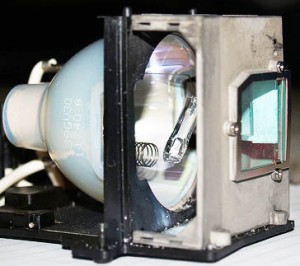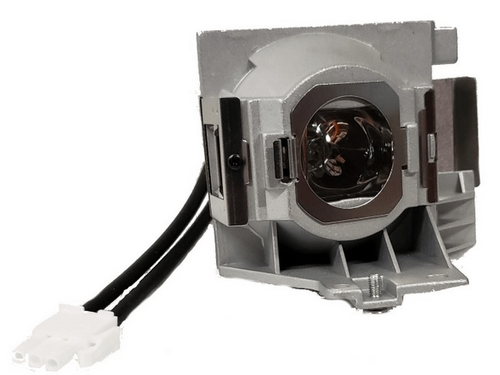Exploring the Underlying Causes of Projector Lamp Explosions: Comprehensive Insights
Introduction
Projector lamps serve a critical function in daily business operations, academic endeavors, and home entertainment. However, the incidence of projector lamp explosion is a less addressed but real concern. This article delves into the topic in detail, exploring the underlying causes of projector lamp explosions, the inherent dangers, and possible prevention steps. The piece is designed to provide comprehensive insights for projector users, IT support personnel, managers, and anyone interested in understanding and solving the problem efficiently.
What Essentially is a Projector Lamp?
A projector lamp, often the heart and soul of a projector, functions as its primary light source. It's a complex component crafted from a highly pressurized mercury vapor arc lamp. Put simply, it generates a bright, intense light, which a small rotating mirror disperses in various directions to produce the images and videos shown on your screen.
However, not every projector lamp is the same. Let’s examine the different types:
- High-Pressure Mercury (HPM) Lamps: These offer good life expectancy, are affordable to replace, but might not deliver the best brightness.
- Ultra High Performance (UHP) Lamps: Renowned for their superior brightness but come with a higher replacement cost.
- Metal Halide Lamps: Offering high output, these lamps are commonly found in commercial projectors.
Each of these differ in aspects like power output, bulb life, and replacement cost. Combining these features, they form the backbone of the projector, quintessentially affecting its performance, longevity, and most importantly, your viewing experience.
Why Do Projector Lamps Explode - Unmasking the Reasons?
Projector lamps function under high-pressure conditions, making them susceptible to ruptures and explosions. Various factors, largely revolving around heat, frequency of use, lamp quality, and power supply stability, contribute to the bulbs' explosive tendencies.
Excessive Heat
Excessive heat generally emerges as the primary culprit behind projector lamp explosions. This is typically due to:
- Overuse without giving the projector enough time to cool off.
- Inadequate ventilation leading to accumulation of heat.
- Insufficient cooling caused by flawed internal fan operation or clogged filters.
High Frequency of Power On/Off Cycles
Projector lamps particularly high-pressure types, undergo stress during the warm-up and cool-down phases every time they are switched on and off.
- Frequently toggling the projector on and off accelerates lamp wear-out, putting it at risk of exploding.

Low-Quality Lamps
Opting for unbranded or low-quality lamps is another potential risk factor.
- These replacements often do not comply with the necessary safety and quality standards, increasing the risk of lamp explosions.
Power Surges
Projector lamps are sensitive to abrupt fluctuations in electrical power, which are common in areas with unstable power supplies.
- An unexpected electrical spike can trigger overheating or a short circuit, resulting in a lamp explosion.
Statistics
Consider some interesting statistics that state that approximately 30% of projector lamp explosions are heat-related, around 20% are due to power supply issues, and about 15% result from using low-quality lamps. These statistics underline the importance of managing these issues effectively to prevent projector lamp explosions.
In conclusion, understanding and controlling these unmasked reasons can go a long way toward ensuring the safety and longevity of your projector lamps. Proactively addressing these factors reduces the chances of explosions, promoting optimal projector performance and user safety.

What are the Potential Dangers of Exploding Projector Lamps?
Projector lamp explosions are unpredictable events that can entail several potential hazards. Improved awareness of such risks aids in formulating better-responsive measures.
* Physical Threat: The most obvious danger is the emission of glass shards. These fragments can fly out at high speeds upon explosion, posing a direct physical threat to nearby individuals.
* Toxic Exposure: These shards can potentially carry toxic substances like mercury, released upon an explosion. Breathing in mercury vapors or even skin contact can pose health hazards.
* Component Damage: An exploding lamp can damage integral projector components. From a financial perspective, this could be a significant blow, especially for businesses or educational institutions where projectors are integral assets.
Hence, understanding these risks leads to a balanced perception of not just the immediate harm but also the long-term implications of an exploding projector lamp. It underlines the importance of proactive measures, regular maintenance, and quality assurance in enhancing projector lifespan and safety in its usage.
What Proactive Steps Can Prevent Projector Lamp Explosions?
Understanding and preventing projector lamp explosions starts with identifying key protective and precautionary steps. Here, we outline several practical, proactive measures to maintain the safety and extend the lifespan of your projector lamps.
1. Regular Cooling Breaks: This cannot be emphasized enough. Significant heat buildup can lead to an explosion. It's essential to allow your projector enough time to cool down after each usage.
2. Optimal Positioning for Ventilation: Ensure that your projector is located in an area with adequate ventilation. This helps dissipate the heat generated during operation and prevents overheating.
3. Timely Lamp Replacements: While it may seem economically smart to use a projector lamp until the bitter end, waiting for total burnout can dramatically increase the chances of an explosion. Regular, timely replacements are crucial in maintaining a safe environment. It's also an opportunity to ensure that each replacement meets the right specifications and safety standards.
4. Use of Surge Protectors: Power surges can cause abrupt spikes in electric power, which can overwhelm and explode a projector lamp. Surge protectors help protect your equipment from such power fluctuations.
5. Preference for High-Quality Replacement Lamps: While cheaper, unbranded lamps might be tempting, they often do not meet the required safety and performance standards. Opting for a manufacturer recommended or high-quality replacement lamp is a safer, wiser choice.
6. Lamp Shutdown Timers: These handy devices can help plan intervals during which the lamp can shutdown. This will prevent overuse and reduce the stress on the lamp, prolonging its life and reducing the risk of explosions.
By incorporating these steps, you can go a considerable way toward preventing projector lamp explosions, thereby making your workspace or leisure area safer and more conducive to productivity.
Do Regular Maintenance and Quality Assurance Impact Projector Lamp Lifespan?
A closer look at both regular maintenance and quality assurance measures can shed light on their impact on extending the lifespan of projector lamps. These two critical aspects can not only promote increased longevity but also enhance performance and safety.
The Role of Regular Maintenance
Maintenance plays a pivotal role in the functioning of projector lamps. Here's why:
- Prevents Heat Build-up: Regular cleaning of projector filters and fans can curb heat accumulation, preventing overheating that contributes to lamp failure or even explosion.
- Reduces Lamp Stress: Utilizing the projector in 'eco' or 'power saver' mode helps decrease stress on the lamp, thus extending its lifespan. Statistics show that a projector lamp's life can be extended by an average of 20% when using 'eco' mode.
Importance of Quality Assurance
Quality assurance ensures that you get the best out of your projector lamps. This entails:
- Guaranteed Safety Standards: Using manufacturer-certified and recommended lamps ensures you end up with a product that abides by both safety and performance standards.
- Economy vs. Quality: Skimping on expenses might result in choosing cheaper, generic lamps. However, these often don’t match the quality of branded equivalents, eventually leading to decreased lamp life and possibly, lamp explosions.
Therefore, a combination of efficient regular maintenance and reliable quality assurance measures ensures projector lamps deliver an optimal performance while ensuring safety and an extended lifespan.
Conclusion
Understanding the causes of projector lamp explosions and observing the preventive measures discussed can significantly minimize the risk and ensure a safer, productive use of your projector. Regular maintenance and quality lamps are investments that certainly pay dividends in the long run.
Related FAQs about what causes projector lamps to explode
How frequent are the cases of projector lamps exploding?
While the frequency varies, it's important to note that projector lamp explosions are uncommon when proper maintenance is performed and high-quality lamps are used. However, neglecting these can result in an increased risk, especially in projectors that are extensively used.
Can projector lamp explosions cause harm to people?
Yes, projector lamp explosions can pose physical threats to individuals. Glass shards emitted from the explosion can cause injury. Additionally, these shards could potentially carry toxic substances like mercury, which pose health hazards upon inhalation or skin contact.
Are there specific brands or types of projector lamps more prone to exploding?
Exploding projector lamps isn't a brand-identified issue but is more related to lamp quality and usage conditions. Typically, low-quality, unbranded lamps are more susceptible to explosion. High-pressure mercury lamps, exposed to harsh environments or frequent power cycles, are also at risk.


